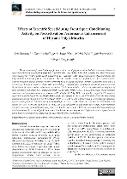Effects of Eccentric Speed during Front Squat Conditioning Activity on Post-activation Performance Enhancement of Hip and Thigh Muscles

Autor
Kolinger, Dominik
Pisz, Anna
Wilk, Michal
Petružela, Jan
Krzysztofik, Michal
Datum vydání
2024Publikováno v
Journal of Human KineticsRočník / Číslo vydání
91 (March Spec Issue)ISBN / ISSN
ISSN: 1640-5544ISBN / ISSN
eISSN: 1899-7562Metadata
Zobrazit celý záznamKolekce
Tato publikace má vydavatelskou verzi s DOI 10.5114/jhk/183917
Abstrakt
The phenomenon of post-activation performance enhancement plays an unidentified role in movement eccentric speed and individual muscle group responses. Therefore, this study aimed to determine whether the loaded front squat (FSq) speed of the eccentric phase would influence the post-activation performance enhancement effect and whether the FSq would elicit similar performance enhancement of knee flexion, knee extension, hip flexion, and hip extension muscles. Twenty resistance-trained handball players performed the FSq under maximum eccentric-concentric speed and 2-s eccentric speed (only the eccentric phase performed), while pre- and post-front squat countermovement jump, knee, and hip isokinetic flexion/extension performance were tested. The FSq conditioning activity was performed in a single set of three repetitions with either 90% (maximum eccentric-concentric speed) or 120% (2-s eccentric speed) of one repetition maximum, and post-performance was measured 4-12 min after the FSq. Athletes randomly changed the FSq eccentric speed and tested the hip or knee isokinetic flexion/extension strength at 180 degrees/s. ANOVA showed that the rate of force development during the jump increased (Cohen d = 0.59-0.77) with no differences between 2-s eccentric and maximum speed eccentric protocols. Isokinetic strength increased after the 2-s eccentric FSq in hip extension (d = 0.76-0.86), knee flexion (d = 0.74-0.88), and hip flexion (d = 0.82), with no differences in knee extension strength. After maximum eccentric-concentric speed, isokinetic strength increased in hip extension (d = 1.25). In conclusion, the FSq conditioning activity enhances hip extensors' performance more than knee extensors' performance. Different eccentric types of muscle action during a conditioning activity alter the level of local muscle enhancement.
Klíčová slova
post-activation potentiation, complex training, power training, isokinetic, handball,
Trvalý odkaz
https://hdl.handle.net/20.500.14178/2508Licence
Licence pro užití plného textu výsledku: Creative Commons Uveďte původ 4.0 International







